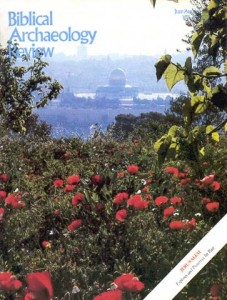Is the Siloam Channel Referred to in Chronicles and Isaiah?
Sidebar to: Jerusalem’s Water Supply During Siege—The Rediscovery of Warren’s Shaft
When the Bible describes King Hezekiah’s late eighth century preparations to withstand the imminent attack on Jerusalem by Sennacherib of Assyria, the Bible tells us that Hezekiah’s people “blocked up all the springs, and the streams which flowed through the land.” “‘Why’,” they said, “‘should Assyrian kings come here and find plenty of water’” (2 Chronicles 32:4; New English Bible). Later we are told that “It was this same Hezekiah who blocked the upper outflow of the waters of Gihon and directed them downwards and westwards to the city of David” (2 Chronicles 32:30).
It seems clear that the upper outflow which was blocked by Hezekiah was the flow to the Siloam Channel, as described in the accompanying article by Yigal Shiloh. The Siloam Channel waters were diverted by the flow through Hezekiah’s Tunnel which directed the waters of Gihon under the city to the reservoir on the other side of the hill.
But what were all the springs which Hezekiah’s people are said to have blocked? In some translations the reference is not to springs which were blocked, but to “fountains” which were stopped up (King James Version). It seems likely that this refers to the irrigation “windows” in the Siloam Channel which were opened and closed to irrigate the adjacent fields from the water flowing through the Siloam Channel. These irrigation “windows” are described in Dr. Shiloh’s article. When they were opened, the water flowing through these windows easily gave the appearance of fountains or springs.
Already a library member? Log in here.
Institution user? Log in with your IP address.

